Event Streaming with Kafka
Deep Dive into Kafka Beyond the Basics
ZooKeepers Role in Kafka
Welcome back! In this lesson, we’ll explore how ZooKeeper underpins coordination in an Apache Kafka cluster handling data from multiple EV charging stations.
Our scenario includes:
- A Kafka cluster of three brokers
- Multiple topics (each with several partitions)
- Producers streaming charging-station metrics
- Consumers powering a live-status mobile app or dashboard
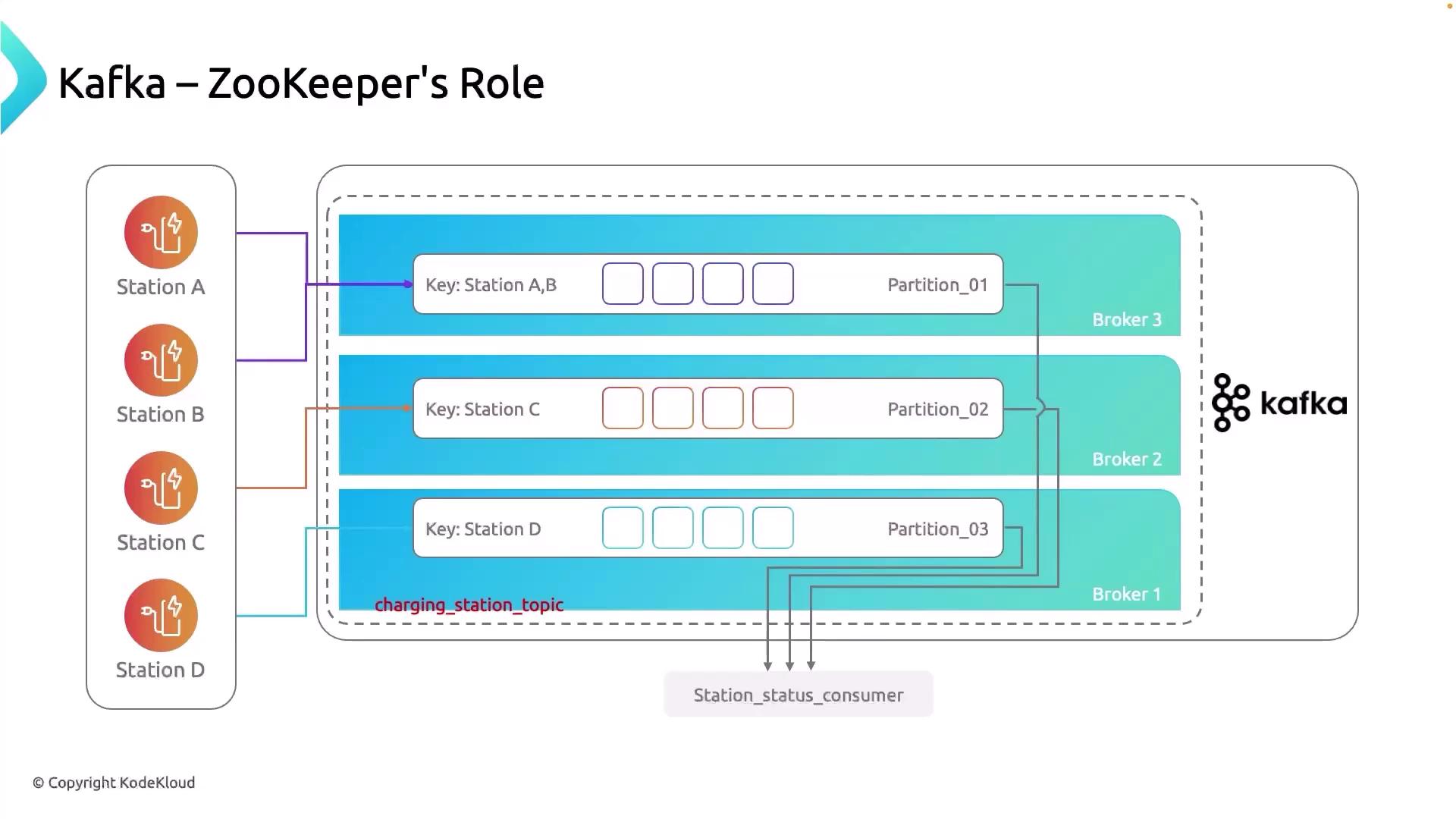
Under the hood, Kafka relies on ZooKeeper for:
- Topic creation and deletion
- Broker membership (addition/removal)
- Producer and consumer group coordination
- Partition assignment and leadership election
- Per-group offset tracking
All of these tasks demand a reliable coordination layer—this is where ZooKeeper comes in.
Coordination Challenges in Kafka
1. Lack of Coordination
Without a central registry, brokers can’t reliably elect leaders or assign partitions, leading to potential message loss or consumer duplication.
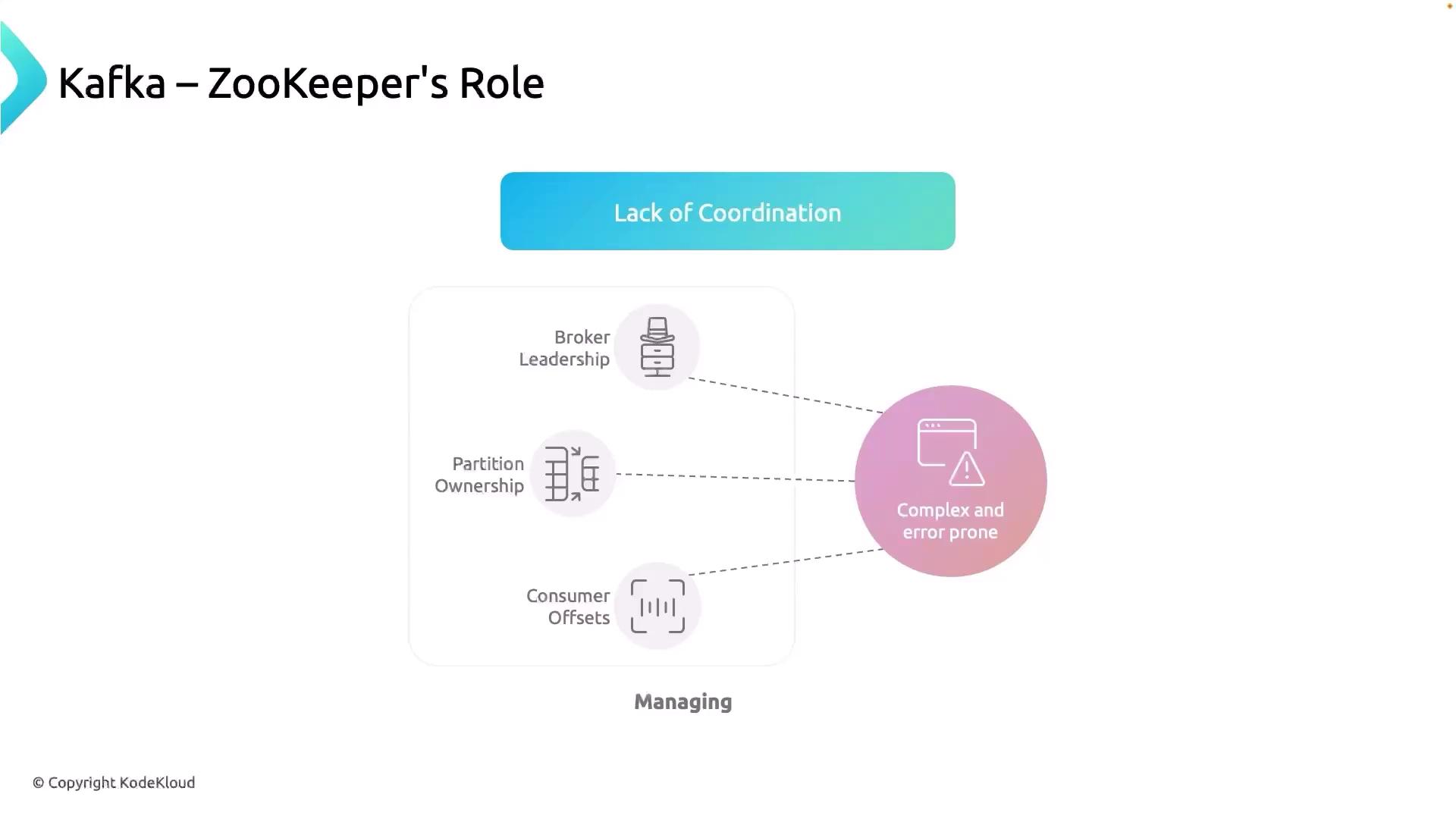
2. Undetected Failures
If a broker crashes or falls behind in replication, Kafka needs to detect it immediately to reassign partitions and avoid downtime.
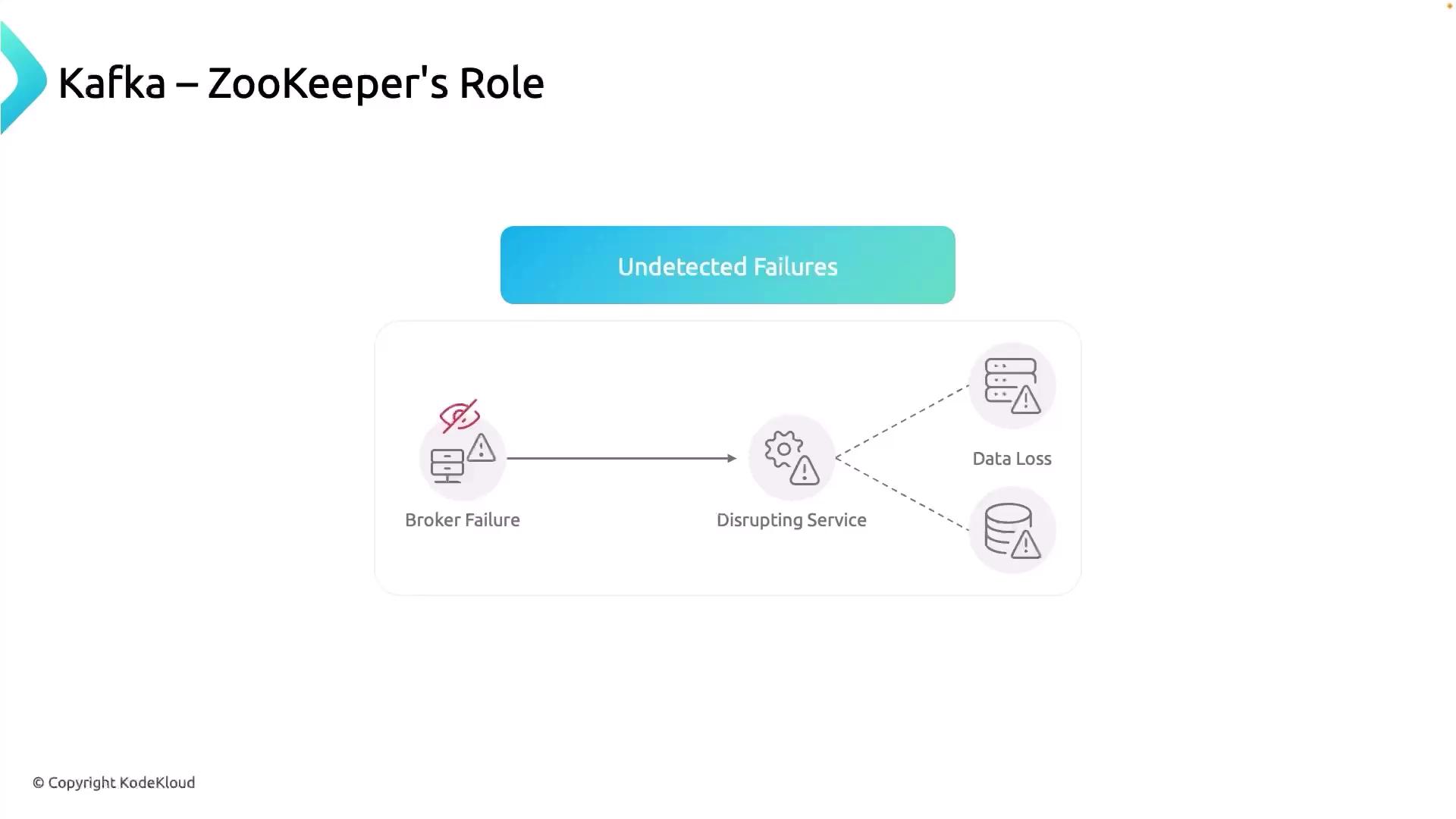
3. Manual Membership Management
Manually adding or removing brokers can destabilize a cluster, especially under heavy load. An automated registry prevents human error.
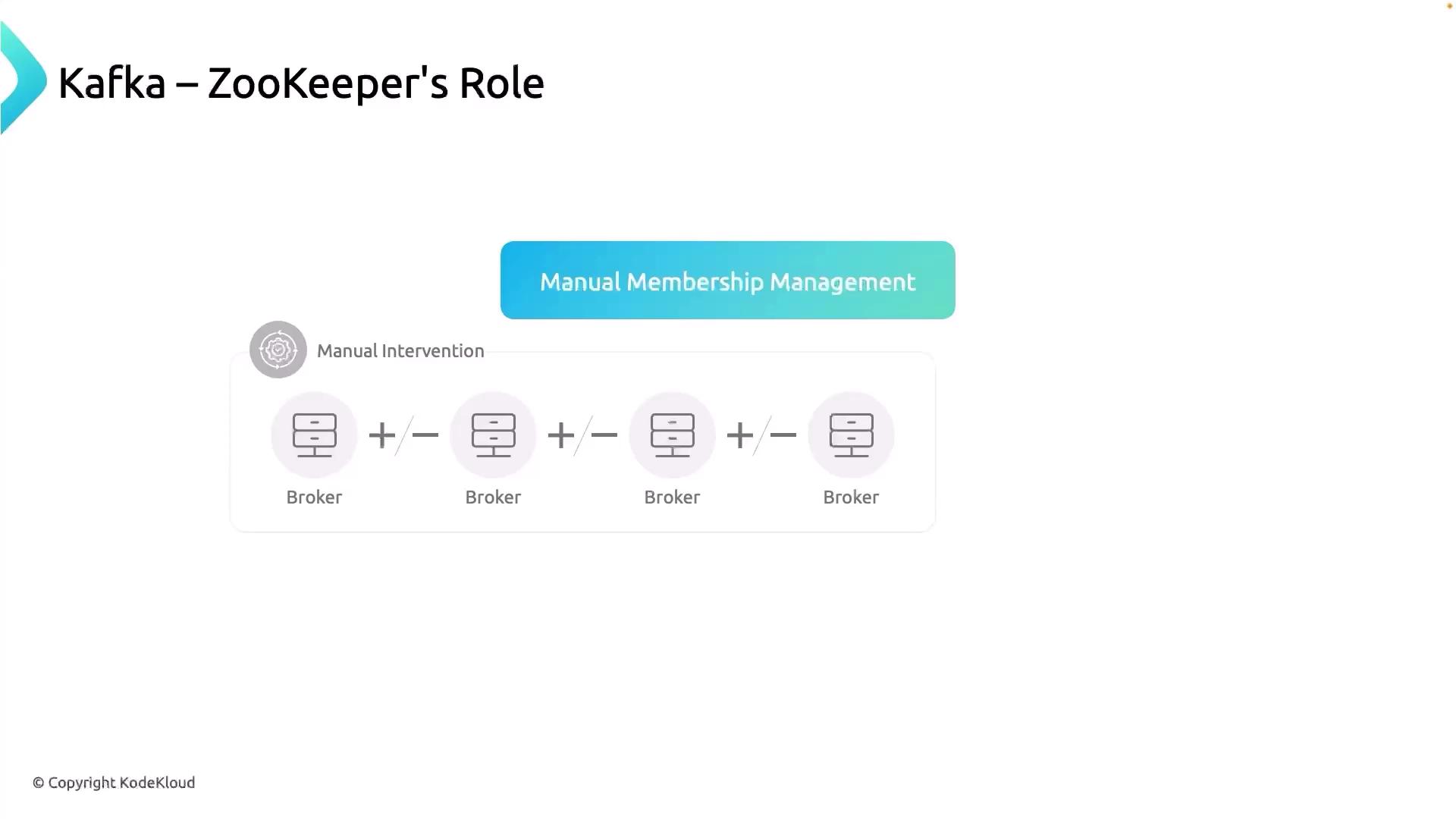
4. Inconsistent Configuration
A misconfigured broker may join the cluster and receive partitions before you notice, causing unpredictable behavior until reconfiguration.
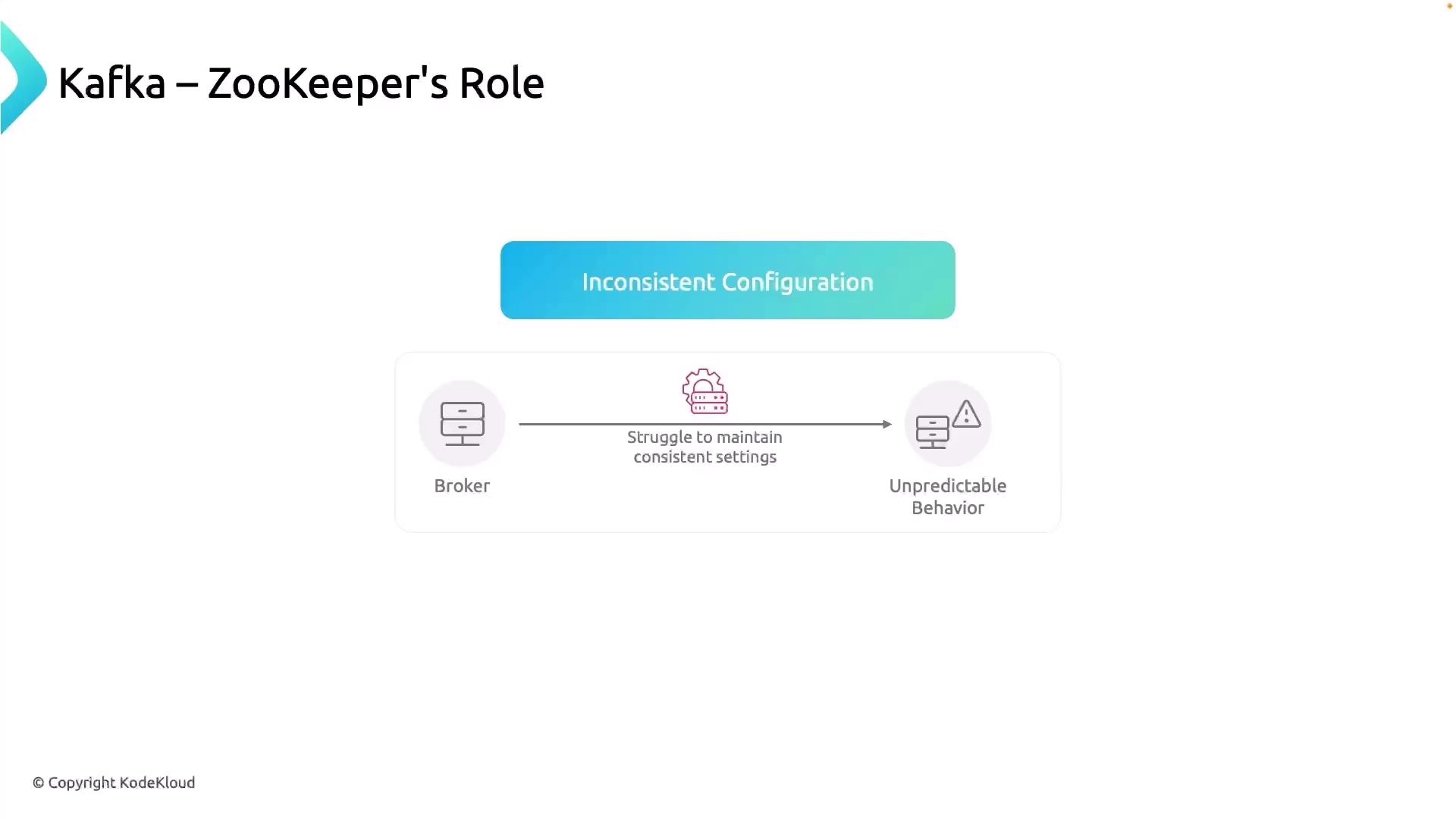
5. Single Point of Failure
Relying on a single broker for metadata risks a cascading outage if it goes down.
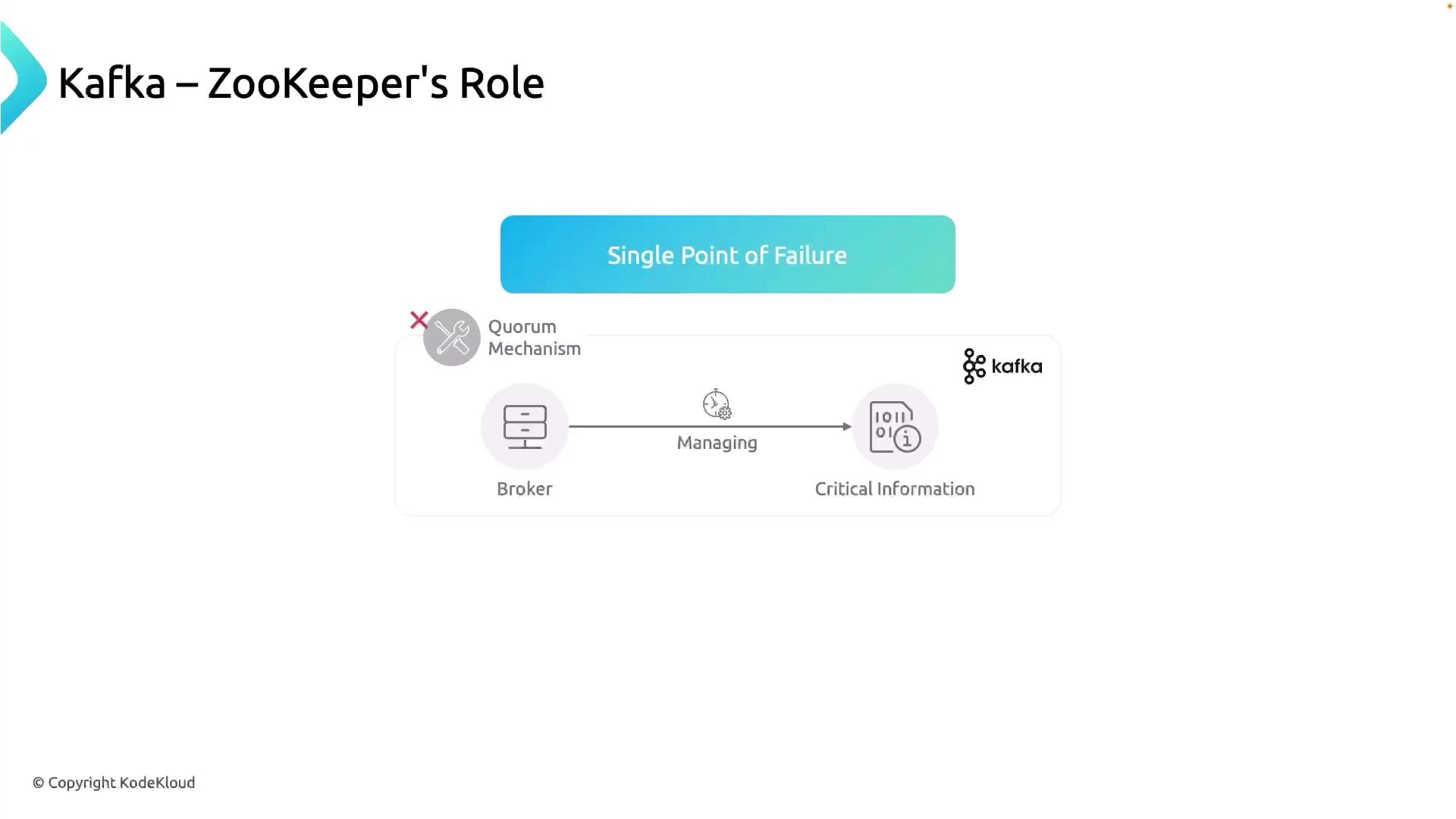
Warning
Run ZooKeeper as an odd-numbered ensemble (typically 3 or 5 nodes). Losing a quorum means Kafka can’t elect a new controller.
6. Offset Management Complexity
Tracking consumer offsets across partitions without a centralized store is error-prone and complicates recovery after failures.
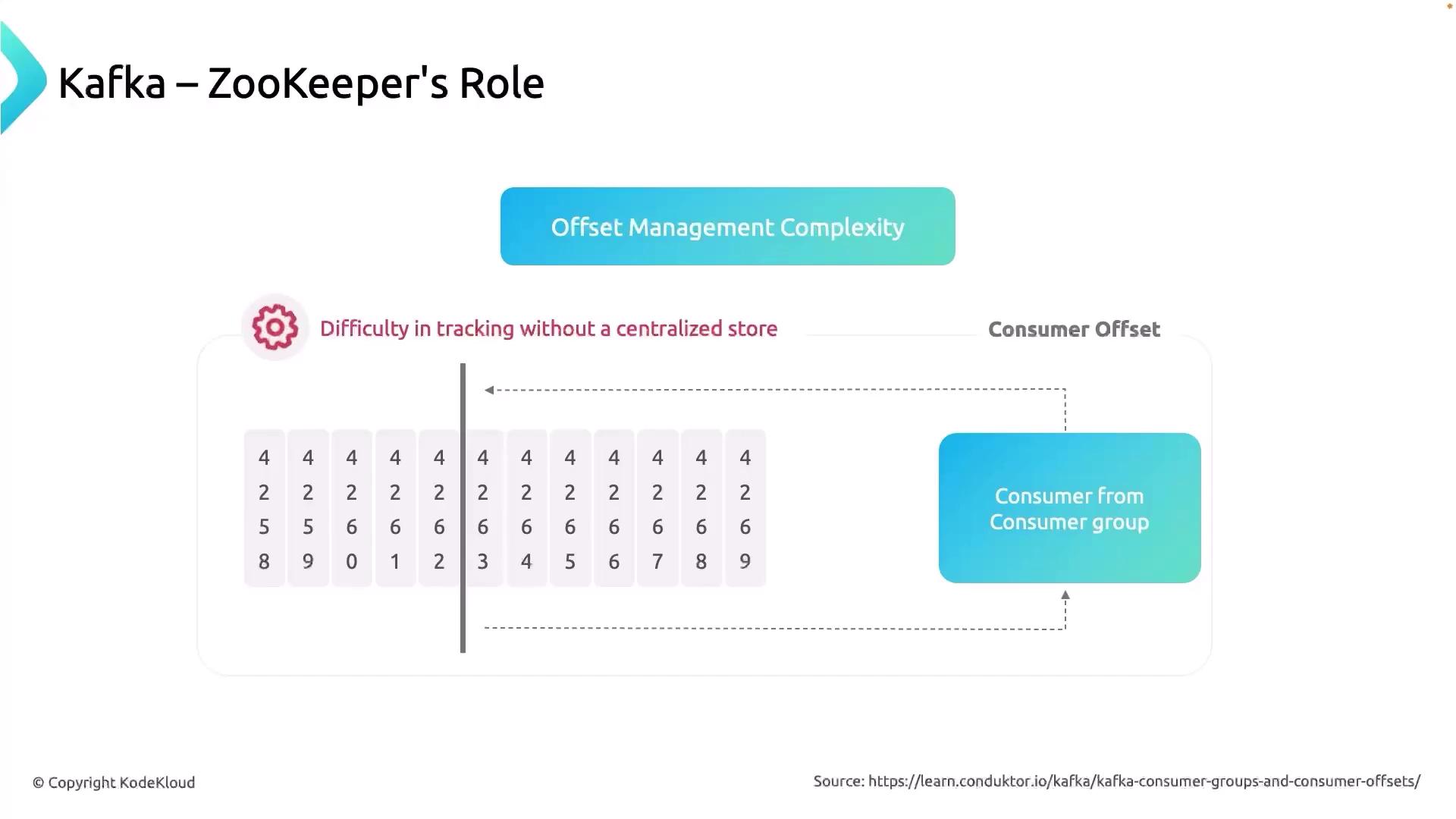
All these challenges illustrate why Kafka delegates cluster coordination to ZooKeeper.
How ZooKeeper Works with Kafka
Upon Kafka installation, ZooKeeper is bundled as an ensemble (usually 3–5 nodes). One server becomes the leader and handles all metadata writes; the rest are followers that replicate this state. If the leader fails, followers elect a new leader to maintain high availability.
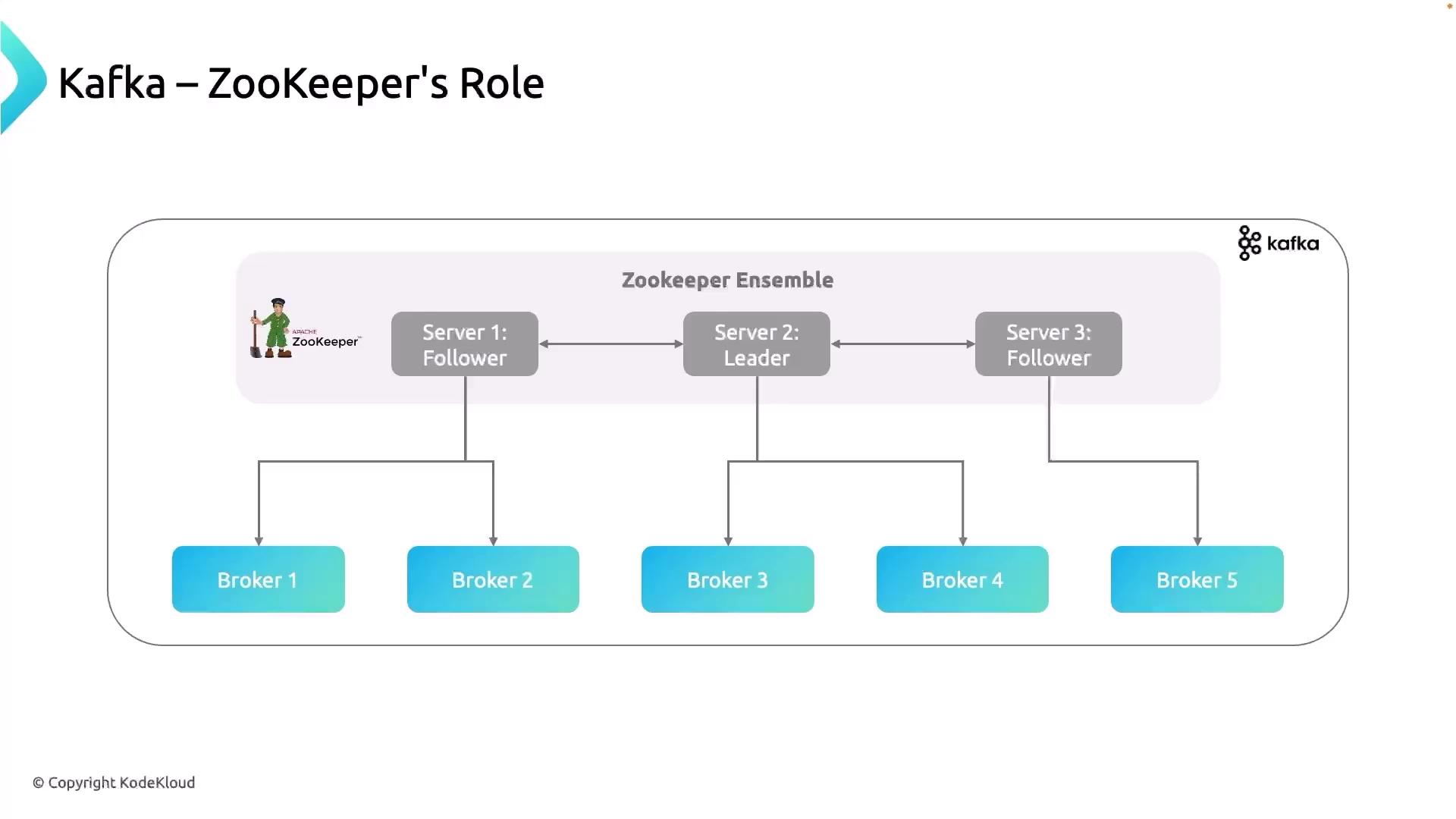
Key Roles of ZooKeeper in Kafka
Dynamic Broker Registry
Brokers register on startup, and ZooKeeper maintains the list of active nodes for partition assignment.Leader Election
For each partition, ZooKeeper elects a leader broker. On failure, it promotes an in-sync replica automatically.Topic Configuration Management
ZooKeeper stores topic-level settings (partitions, replication factor, configs) so all brokers use a consistent view.Notification System
Watchers in ZooKeeper alert brokers to cluster changes (broker joins/fails, topic updates), enabling real-time responsiveness.
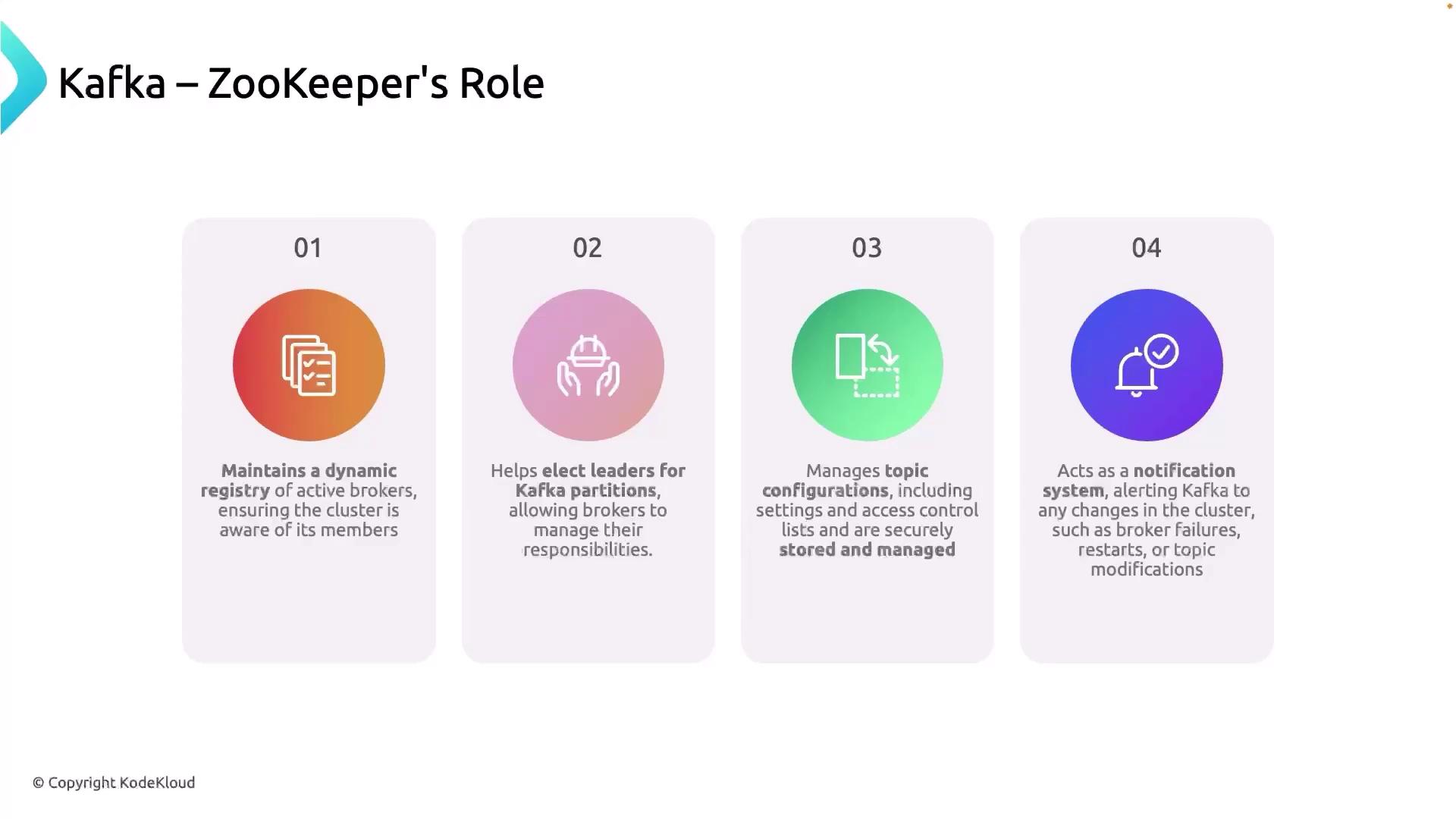
| Function | Purpose |
|---|---|
| Dynamic Broker Registry | Track active brokers for partition leadership and balancing |
| Leader Election | Ensure high availability by promoting in-sync replicas |
| Topic Configuration Management | Centralize topic settings across the cluster |
| Notification System | Push real-time updates on cluster state changes |
Links and References
Watch Video
Watch video content